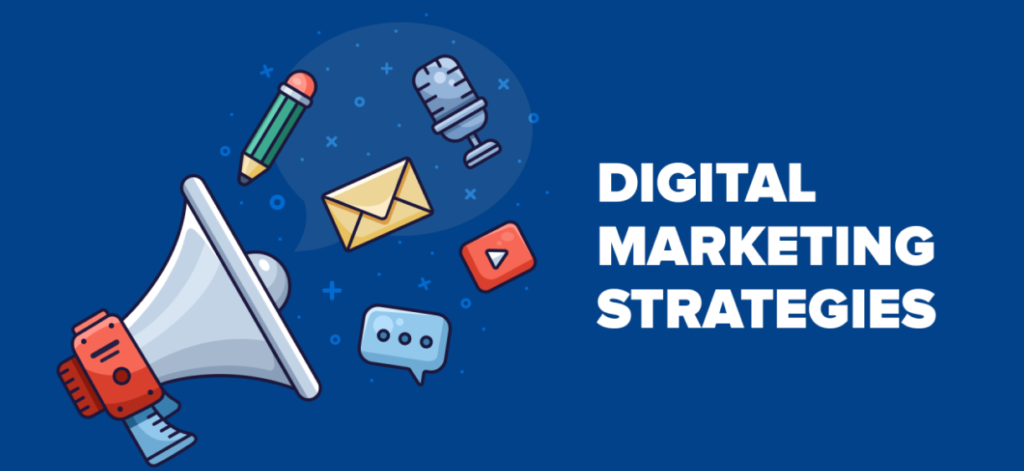The gaming industry has transformed into a multi-billion-dollar powerhouse, with millions of passionate players worldwide. However, marketing in this space requires more than just traditional advertising. Gamers are tech-savvy, highly engaged, and skeptical of brands that don’t understand their culture. To succeed, companies need a unique blend of creativity, community-building, and cutting-edge strategies.
In this blog, we’ll uncover the secrets to successful marketing in the gaming industry, exploring audience insights, effective branding, influencer collaborations, and the latest digital marketing techniques.
1. Understanding the Gaming Audience
Before diving into marketing strategies, it’s crucial to understand who your audience is. The gaming community is diverse, with different interests, behaviors, and expectations.
a) Types of Gamers
- Casual Gamers – Play games occasionally, often on mobile devices.
- Hardcore Gamers – Invest significant time in gaming and are highly competitive.
- Professional Gamers & Esports Athletes – Compete in tournaments and have a strong social media presence.
- Content Creators & Streamers – Engage audiences through platforms like Twitch and YouTube.
b) Gamer Preferences & Behavior
- Gamers value authenticity and transparency.
- They prefer interactive and immersive marketing.
- Word-of-mouth and influencer recommendations matter more than traditional ads.
- Community-driven engagement is key.
2. Branding & Positioning in the Gaming Market
a) Creating a Unique Identity
A strong brand identity helps you stand out. Whether you’re marketing a game, gaming hardware, or an esports brand, consider the following:
- Logo & Visual Aesthetic – Colors, themes, and icons should align with the gaming culture.
- Tone & Messaging – Should be relatable, fun, and engaging.
- Values & Mission – Connect with gamers on a deeper level by supporting gaming culture.
b) Leveraging Nostalgia & Fandom
Many successful gaming brands use nostalgia to attract older gamers while embracing new trends to capture younger audiences.
3. Influencer & Content Marketing in Gaming
a) Partnering with Gaming Influencers
Gaming influencers and streamers have loyal fan bases. Collaborating with them can boost your brand’s visibility.
Types of Influencers in Gaming:
- Mega Influencers (1M+ followers) – Expensive but reach massive audiences.
- Macro Influencers (100K-1M followers) – Good for targeted campaigns.
- Micro Influencers (10K-100K followers) – Highly engaged niche audiences.
- Nano Influencers (<10K followers) – Best for authenticity and trust-building.
b) Creating Engaging Content
Content should be interactive and value-driven. Some ideas include:
- Live streams & Gameplay Videos – Partner with streamers for game demos.
- Tutorials & How-To Guides – Educate users on game mechanics.
- Behind-the-Scenes Content – Show game development stories.
- Memes & Challenges – Encourage viral engagement.
4. Social Media Strategies for Gaming Marketing
a) Choosing the Right Platforms
Each social media platform serves a different purpose in gaming marketing:
- YouTube – Best for long-form gaming content, trailers, and tutorials.
- Twitch – Live streaming for real-time engagement.
- Instagram & TikTok – Short, visually appealing clips and memes.
- Twitter (X) – Community updates, memes, and gaming discussions.
- Reddit & Discord – Deep engagement and community-building.
b) Creating Viral Campaigns
- Hashtag Challenges – Encourage gamers to participate in trends.
- User-Generated Content (UGC) – Let players share their experiences.
- Gaming Memes – Relatable humor spreads fast in gaming communities.
5. The Role of Esports & Competitive Gaming
Esports has exploded in popularity, creating new marketing opportunities. Brands can tap into this market by:
- Sponsoring Esports Teams & Tournaments
- Hosting Gaming Competitions
- Creating Limited Edition Gaming Merchandise
6. Paid Advertising Strategies for Gaming
a) Running Targeted Ads
Use platforms like Google Ads, Facebook Ads, and YouTube Ads for precision targeting.
- Demographic Targeting – Age, gender, interests, and behaviors.
- Behavioral Targeting – Past gaming activity and purchase history.
- Geotargeting – Promote to specific regions where gaming is popular.
b) In-Game Advertising
- Native Ads in Games – Sponsored content that blends with gameplay.
- Product Placement – Featuring real-world brands in games.
- Reward-Based Ads – Players watch ads for in-game rewards.
7. Gamification in Marketing
Gamification enhances engagement by incorporating gaming elements into marketing campaigns. Examples include:
- Loyalty Programs – Players earn points for interactions.
- Interactive Quizzes & Challenges – Engaging content with rewards.
- AR & VR Experiences – Immersive promotions and brand activations.
8. Leveraging Emerging Technologies
a) AI & Machine Learning in Gaming Marketing
AI helps analyze gamer behavior and personalize marketing efforts. Examples include:
- Chatbots for customer support.
- AI-driven recommendations and game suggestions.
b) Blockchain & NFTs in Gaming
- Play-to-earn (P2E) gaming models.
- NFT collectibles and skins.
9. Community Building & Engagement
A strong gaming community boosts brand loyalty. Effective community engagement strategies include:
- Hosting Events & Tournaments
- Creating Exclusive Online Communities (e.g., Discord servers)
- Encouraging Fan Creations & Mods
10. Case Studies of Successful Gaming Marketing Campaigns
a) Fortnite’s Brand Collaborations
Fortnite collaborated with major brands like Marvel, Nike, and Travis Scott to create in-game events and exclusive skins.
b) Cyberpunk 2077’s Hype Marketing
Despite its rocky launch, Cyberpunk 2077 built massive anticipation through trailers, influencer partnerships, and pre-launch promotions.
c) Pokémon GO’s AR Revolution
Niantic’s use of augmented reality (AR) made Pokémon GO a cultural phenomenon, demonstrating the power of interactive marketing.
Conclusion: The Future of Gaming Marketing
Marketing in the gaming industry is ever-evolving. Brands must stay ahead by embracing technology, building strong communities, and fostering authenticity. By implementing these secrets, you can create impactful campaigns that resonate with gamers and drive long-term success.
Are you ready to level up your gaming marketing strategy? 🚀🎮


